Top 26 Foods Rich In Manganese
Be it for breakfast, lunch, or dinner - you can have these manganese-rich foods any time.

Image: Shutterstock
Manganese is a vital nutrient that contributes to your health. Unfortunately, it is not as popular as other nutrients and is less talked about. In this article, we bring you a list of foods high in manganese and explain how you can get enough of this nutrient. We will also talk about why manganese is important for your health, how to figure out if you are getting enough of it, how to increase its intake, the supplements you can take, and any drug interactions you should know about.

Keep scrolling to check out all the info!
In This Article
What Is Manganese? Why Is It Important?
A trace mineral, manganese is found mostly in the bones, kidneys, liver, and pancreas. The mineral helps the body form the connective tissue, bones, and sex hormones. It also plays an important role in calcium absorption and blood sugar regulation in addition to aiding carbohydrate and fat metabolism.
The mineral is also necessary for optimal brain and nerve function (1). It even helps prevent osteoporosisi A bone disorder that arises when bone composition or structure alters or bone mass and bone mineral density decline. and inflammation.
More importantly, manganese is vital for numerous bodily functions like the production of digestive enzymes, nutrient absorption, immune system defenses, and even bone development.
 Trivia
TriviaWell, that is why the mineral is important. But you must know if you are getting enough of this mineral. Are you?
Key Takeaways
- Manganese is essential for bone health, blood sugar regulation, metabolism, and wound healing.
- Turmeric, pumpkin seeds, spinach, and tofu are a few foods rich in manganese.
- Consuming more than 11 mg of manganese supplements per day can muscle tremors and loss of balance and coordination.
- Anemia, weak bones, low immunity, and hormonal imbalance are signs of manganese deficiency.
Are You Getting Enough Of Manganese?
A manganese deficiency can have a major impact on several bodily functions and overall health. Impaired bone formation is one of the main health risks, since manganese is essential for the growth and maintenance of bone structure (2). This increases the risk of fractures and skeletal weakening by causing diseases like osteoporosis. Manganese is also necessary for healthy enzyme function (3). Superoxide dismutase (SOD), a crucial antioxidant enzyme, may be less active in the case of a deficiency, increasing oxidative stress and cellular damage.
In addition, concerns with the metabolism of carbohydrates have been connected to manganese deficiency, which may lead to glucose intolerance and metabolic syndrome (4). Since manganese is involved in the synthesis of neurotransmitters, it may also have neurological effects; a deficiency may show up as mood disorders, cognitive decline, or symptoms similar to Parkinson’s disease (5).
A deficiency of manganese can lead to the following symptoms:
- anemia
- hormonal imbalances
- low immunity
- changes in digestion and appetite
- infertility
- weak bones
- chronic fatigue syndromei A condition characterized by extreme exhaustion, irregular sleep patterns, discomfort, and other symptoms aggravated by activity.
There are no set recommended dietary allowances for manganese that have been established. Which is why we look at another guide, called the Adequate Intake (AI) – which is the estimated amount of the nutrient consumed by a group of healthy people and assumed to be adequate (6).
| Age | RDA Of Manganese |
| Birth to 6 months | 3 mcg |
| 7 to 12 months | 600 mcg |
| 1 to 3 years | 1.2 mg |
| 4 to 8 years | 1.5 mg |
| 9 to 13 years (boys) | 1.9 mg |
| 14 to 18 years (boys and men) | 2.2 mg |
| 9 to 18 years (girls and women) | 1.6 mg |
| 19 years and above (men) | 2.3 mg |
| 19 years and above (women) | 1.8 mg |
| 14 to 50 years (pregnant women) | 2 mg |
| Breasfeeding women | 2.6 mg |
That’s the recommended adequate intake of the mineral. What if you aren’t getting the required dosage? That’s when you walk straight into your kitchen.
What Are The Foods High In Manganese?
Some of the richest sources of manganese are:
- Oats
- Wheat
- Pecans
- Soybeans
- Rye
- Barley
- Quinoa
- Garlic
- Cloves
- Brown rice
- Black Tea
1. Oats
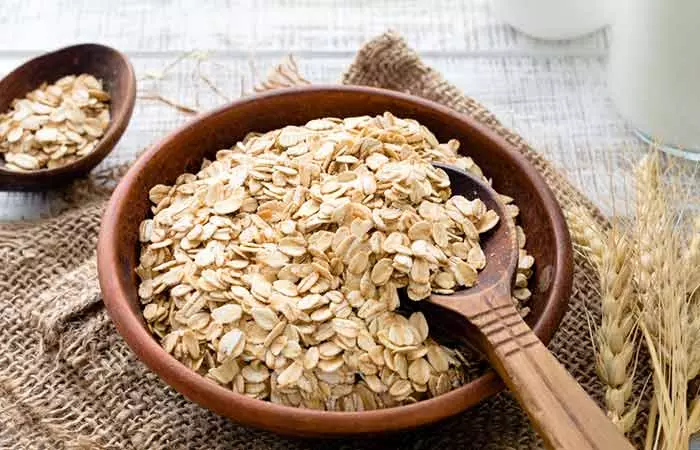
Serving size – 1 cup (156 g)
Manganese – 7.7 milligrams
DV% – 383
Apart from being one of the richest sources of manganese, oats also enjoy the reputation of being rich in antioxidants and the super-fiber, beta-glucan – which may help prevent and treat metabolic syndrome and obesity (7).
Oats are one of the healthiest breakfast options and play a role in lowering blood cholesterol levels and improving heart health.
How To Include In Your Diet
Have a bowl of oats for breakfast. You can also add fruits, like blackberries, blueberries, grapes, and kiwi, to make your morning meal far more nutritious.
2. Wheat
Serving size – 1 1/2 cups (168 grams) Manganese – 5.7 milligrams DV% – 286
Here, we mean whole wheat and not the refined variety. Whole wheat also contains a whole lot of fiber that regulates blood sugar and blood pressure levels and works great for heart and abdominal health.
Whole wheat also contains lutein, an antioxidant important for eye health.
How To Include In Your Diet
Have whole wheat bread toast for breakfast. Add peanut butter and probably a bowl of fruit for extra benefits. You can make a healthy and tasty whole wheat bread sandwich with eggs and collard greens or mustard greens or even Swiss chard. You can also use sesame seed or sunflower seed bread.
3. Pecans
Serving size – 1 cup, chopped (109 grams) Manganese – 4.9 milligrams DV% – 245%They are rich in B vitamins too, which boost brain function and enhance cell metabolism.
These vitamins also help form red blood cells (8).
How To Include In Your Diet
You can have a handful of raw pecans in the morning along with your breakfast. Or add chopped pecans to your evening smoothie. You can add hazelnuts, macadamia nuts, almonds, or walnuts as well because they are also rich in manganese.
4. Soybeans
Serving size – 1 cup (186 grams) Manganese – 4.7 milligrams DV% – 234
In addition to manganese, soybeans are also an excellent source of plant-based protein. Soy protein intake has been linked to a modest decrease in cholesterol levels (9).
Soybeans also contain decent amounts of soluble and insoluble fibers, which improve gut health and can even prevent grave ailments like colon cancer.
How To Include In Your Diet
You can add textured soy protein to soups and lentil stews. You can also consume it in the form of tempeh. However, keep your soybean intake in check if you have thyroid issues (especially hypothyroidismi A disorder where the thyroid gland does not generate adequate thyroid hormone, affecting metabolism, heart rate, and body temperature. ) as soy has been found to reduce thyroid functioning (10).
 Quick Tip
Quick Tip5. Rye
Serving size – 1 cup (169 grams) Manganese – 4.5 milligrams DV% – 226
Rye is often quoted to be better than wheat in terms of the overall health benefits. It is also higher in fiber than wheat, making it better in controlling appetite and inflammation. Also, rye flour contains less gluten than whole wheat flour – and can be more beneficial for gluten-intolerant individuals.
The insoluble fiber in rye also reduces the risk of gallstones (11).
How To Include In Your Diet
You can include rye bread in your breakfast. Rye is also available as rye flakes, which can be included in your morning smoothie. Pair it with dried figs to add more nutrition and taste to it.
6. Barley

Serving size – 1 cup (184 grams)
Manganese – 3.6 milligrams
DV% – 179
Other minerals barley is rich in are selenium, niacin, and iron – vital for body functioning. Barley is also a good source of fiber, the benefits of which you already know.
Barley also contains antioxidants called lignans, which are often linked to a lower risk of cancer and heart disease – as they help reduce inflammation, which is one of the causes of these ailments.
How To Include In Your Diet
One of the best ways is including barley in your evening soup. You can also cook some barley and have it along with a splash of milk or any other dairy products you like and some honey for breakfast (works much better with oatmeal).
7. Quinoa
Serving size – 1 cup (170 grams) Manganese – 3.5 milligrams DV% – 173
It is gluten-free and high in protein, which makes it one of the most popular health foods on the planet. In fact, just to give you a perspective of its reputation – NASA has considered quinoa to be a suitable crop to be grown in outer space, given its high nutrient content and ease of cultivation and use (12).
How To Include In Your Diet
The simplest way to add quinoa to your diet is by boiling it in water (with a pinch of salt, preferably). But ensure you rinse it with water first to get rid of the saponins (compounds found in the outer layer that can impart a bitter flavor).
8. Garlic
Serving size – 1 cup (136 grams) Manganese – 2.3 milligrams DV% – 114
Most of the beneficial stuff from garlic can be attributed to the compound allicin. This compound travels to all parts of the body, exerting its potent biological effects.
Garlic can combat sickness and the common cold. It may regulate cholesterol levels and protect the heart.
How To Include In Your Diet
You can simply have 1 to 2 cloves of garlic in the evening or along with your lunch or dinner.
9. Cloves
Serving size – 1 tablespoon (6 grams) Manganese – 2 milligrams DV% – 98
Clove is probably also spelled A-Y-U-R-V-E-D-A. Often used in Ayurvedic medicines, clove also possesses antifungal, antiseptic, and antibacterial properties. It is also a rich source of omega-3 fatty acids.
Cloves might help temporarily reduce the intensity of a toothache. They can also reduce inflammation and enhance digestion.
How To Include In Your Diet
You can simply chew on a raw clove. Or add a few cloves to steamed rice preparations.
10. Brown Rice

Serving size – 1 cup (195 grams)
Manganese – 1.8 milligrams
DV% – 88
Several studies have linked the consumption of brown rice to a decrease in bad cholesterol levels. The rice also cuts the risk of cancers of the colon, breast, and prostate.
Adequate intake of brown rice also aids diabetes treatment as the rice helps cut blood sugar levels too.
How To Include In Your Diet
You can substitute white rice with brown rice in your everyday rice preparations.
11. Garbanzo Beans (Or Chickpeas)
Serving size – 1 cup (164 grams) Manganese – 1.7 milligrams DV% – 84
Thanks to their high fiber content, garbanzo beans enhance satiety and digestion. The beans also balance unhealthy cholesterol levels and protect against heart disease.
And yes, just like soybeans, they are a great source of plant-based protein.
How To Include In Your Diet
You can add the beans to your evening soup and up its nutritional content.
12. Pineapple
Serving size – 1 cup, chunks (165 grams) Manganese – 1.5 milligrams DV% – 76
Pineapples are also a rich source of vitamin C, the nutrient that improves immunity and combats lethal ailments like cancer. And their high fiber and water content promotes regularity in bowel movement and improves the health of the digestive tract.
The vitamin C in the fruit also improves skin health – it protects the skin from sun and pollution and helps reduce wrinkles and fine lines.
How To Include In Your Diet
You can add some pineapple slices to your evening salad. You might also want to add the fruit to your favorite kebabs.
13. Tofu
Serving size – 1/2 cup (126 grams) Manganese – 1.5 milligrams DV% – 74
Tofu is made of soybean curd, which makes it naturally gluten-free and low in calories. With negligible cholesterol, tofu is also an excellent source of calcium and iron.
It has been found that consuming tofu instead of animal protein can lower the levels of bad cholesterol, consequently preventing heart disease.
How To Include In Your Diet
You can add cubes of firm tofu to soups – they can simmer just like beef, pork, chicken, turkey, and lamb does. You can also stir fry it and have for breakfast.
14. Raspberries
Serving size – 1 cup (123 grams) Manganese – 0.8 milligrams DV% – 41
Apart from manganese, raspberries are also rich in ellagic acid, a phytochemical that may help prevent cancer. Raspberries also contain anthocyanins, antioxidants that prevent heart disease and age-related mental decline (13).
How To Include In Your Diet
Include raspberries in your evening fruit salad, to which you can add dates too for enhanced taste. You can even have them in your breakfast smoothie. Adding raspberries to yogurt is also a wonderful idea.
15. Corn
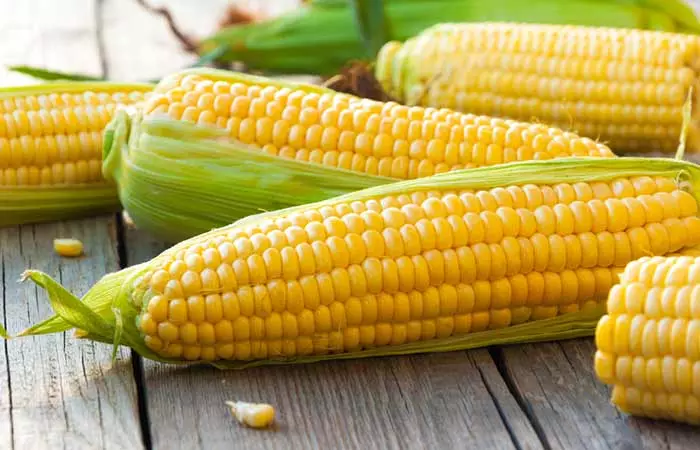
Serving size – 1 cup (166 grams)
Manganese – 0.8 milligrams
DV% – 40
Corn is also a good source of protein. And it contains more antioxidants than most other common cereal grains – a couple of those antioxidants are lutein and zeaxanthin, both of which are important for vision health.
How To Include In Your Diet
You can boil corn and have it as a healthy evening snack.
16. Beet Greens
Serving size – 1 cup, 1” pieces (144 grams) Manganese – 0.7 milligrams DV% – 37
Beet greens are also rich in vitamins A and K. Vitamin A plays a role in good vision, ideal skin health, and even enhanced immunity. Vitamin K controls the clotting factors of your blood.
Beet greens are also rich in vitamin C that acts as a coenzyme to synthesize amino acids. And yes, vitamin C, as we know, also builds immunity and skin health.
How To Include In Your Diet
Add beet greens to your vegetable salad.
17. Bananas
Serving size – 1 cup, mashed (225 grams) Manganese – 0.6 milligrams DV% – 30
Bananas are loaded with potassium, a mineral that helps lower blood pressure and eventually wards off several serious diseases like heart attack. And the dietary fiber in bananas improves digestive health.
Interestingly, bananas might also improve the health of your kidneys (14).
How To Include In Your Diet
Eating the whole fruit is the best way. You can have one whole fruit in the night before bedtime (it induces sleep). You can also add chopped bananas to your breakfast smoothie.
18. Strawberries
Serving size – 1 cup, halves (152 grams) Manganese – 0.6 milligrams DV% – 29
The anthocyanins in strawberries protect the heart from disease. These antioxidants may inhibit tumor growth and inflammation and aid cancer prevention.
Also, being a low glycemic indexi Low and desirable levels of a value, called glycemic index, which measures how specific foods elevate blood sugar levels. food and high in fiber, strawberries are also good to prevent diabetes.
How To Include In Your Diet
Eat the fruit as it is as a part of your evening snack. Or include some of the berries in your salad. Even better, add chopped strawberries to yogurt with wheat germ and consume it before hitting the bed or in the morning for breakfast.
19. Kale
Serving size – 1 cup, chopped (67 grams) Manganese – 0.5 milligrams DV% – 26
Kale is rich in manganese, but its most beneficial property lies in its ability to fight inflammation. It also is a natural detoxifier – it helps remove toxins from the body.
How To Include In Your Diet
Raw kale can be added to your evening vegetable salad. You can also have it roasted or sautéed.
20. Turmeric
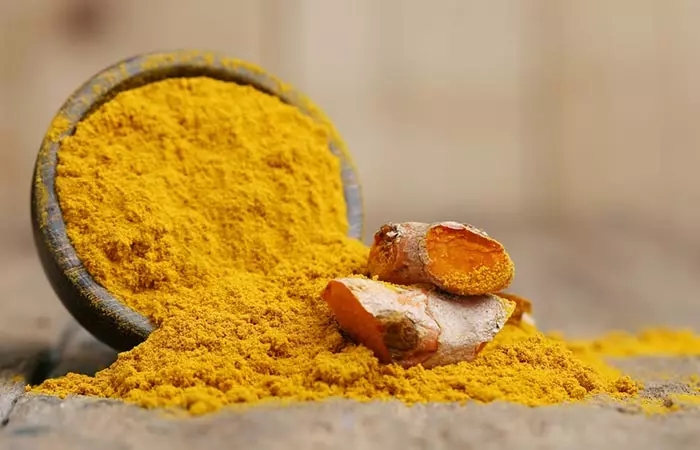
Serving size – 1 tablespoon (7 grams)
Manganese – 0.5 milligrams
DV% – 26
Turmeric needs no introduction. Time and again, science has been backing it up for its wondrous properties. The curcumin in turmeric is a natural anti-inflammatory that may prevent cancer and arthritis. The spice also increases the antioxidant capacity of the body, along with improving brain health and protecting against numerous neural issues.
How To Include In Your Diet
Adding a pinch of turmeric to the dishes you prepare can do wonders. You can also mix half a teaspoon of turmeric in milk and drink it before going to bed.
21. Black Pepper
Serving size – 1 tablespoon (6 grams) Manganese – 0.4 milligrams DV% – 18
Firstly, black pepper improves the absorption of turmeric. Hence, taking both together can give you the best of both the foods. And a higher dose of manganese.
Black pepper is also rich in potassium that improves intestinal health and digestibility. And yes – the outer layer of black peppercorns is known to break down fat cells. So, if you have weight loss goals in mind, you can include black pepper in your routine.
How To Include In Your Diet
You can simply add black pepper to your food preparations, whether it is for breakfast or lunch or dinner. The pepper goes especially well with hot foods.
22. Pumpkin Seeds
Serving size – 1 cup (64 grams) Manganese – 0.3 milligrams DV% – 16
In other words, pumpkin seeds are a nutritional powerhouse coming in a small package. The seeds also may help prevent certain forms of cancer – including that of the stomach, breast, prostate, lung, and colon (15).
In addition to manganese, pumpkin seeds are also rich in magnesium – the mineral required for more than 600 chemical reactions in the body.
How To Include In Your Diet
You can make your own pumpkin seed butter by blending the raw seeds in a food processor. Spread this butter on your breakfast toast. You can also add these seeds to a salad to make it crunchier.
23. Spinach
Serving size – 1 cup (30 grams) Manganese – 0.3 milligrams DV% – 13
There is a reason Popeye relied on spinach, big time. Spinach also contains antioxidants that relieve oxidative stress and fight free radicals. And then, we have lutein and zeaxanthin, two antioxidants in spinach that are important for vision health.
How To Include In Your Diet
Spinach can make a wonderful addition to your evening vegetable salad.
24. Turnip Greens
Serving size – 1 cup, chopped (55 grams) Manganese – 0.3 milligrams DV% – 13
Turnip greens are also rich in iron, one nutrient that prevents hair loss and keeps the body functions happening optimally. These greens also help keep anemia at bay.
Turnip greens are also rich in vitamin K, which helps prevent osteoporosisi A bone disorder that arises when bone composition or structure alters or bone mass and bone mineral density decline. .
How To Include In Your Diet
Salad is one great way. You can also add the greens in sandwiches or wraps.
25. Green Beans
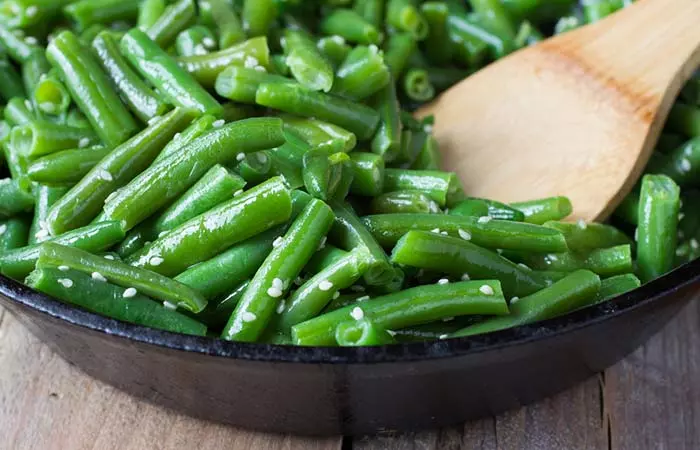
Serving size – 1 cup (110 grams)
Manganese – 0.2 milligrams
DV% – 12
Green beans are also rich in iron, and the nutrient, apart from preventing hair loss, also improves fertility in women. And a quick tip – you can take iron-rich foods with foods rich in vitamin C as the latter improves the absorption of the former.
How To Include In Your Diet
You can usually eat green beans raw. Or you can top fresh green beans with marinara sauce and sprinkle with Romano cheese – it makes for a healthy evening snack. You can replace green beans with lima beans, navy beans, edamame beans, or black beans as they are rich in manganese as well.
26. Black Tea
Serving Size – 1 cup (240 ml)
Manganese – 0.5 milligrams
DV% – 22
Black tea, a popular beverage, is a rich source of manganese (16). It is also rich in antioxidants like flavonoids that may potentially help reduce the risk of chronic health issues like diabetes or cardiovascular disease (17), (18). Regular consumption of black tea has been associated with improved heart health, reduced risk of stroke, and better immune function (17).
How To Include In Your Diet
Enjoy black tea plain or with a slice of lemon. Add a teaspoon of honey or sugar if you like your tea sweet. You can have a relaxing cup of black tea in the evening or in the morning, as per your choice. You also may explore different flavored black tea blends, like Early Grey or other fruity blends.
Those are the top foods high in manganese. Seafoods also have low levels of manganese.
Seafoods with manganese:
- Mussels
- Clams
- Oysters
- Scallops
- Lobster
- Crab
- Shrimp
- Salmon
- Trout
- Tuna
- Cod
- Halibut
But why just foods? Even supplements work well, right?
Or do they?
What About Manganese Supplements? Any Good Brands?
A supplement is necessary only when you are not getting enough of a particular nutrient through food. Remember, it is a supplement. Not a substitute.
And if you are not getting enough of a particular nutrient, a supplement is a good way to bridge the deficiency. The sooner, the better.
Manganese supplements are generally safe. But be careful about the intake. Doses of manganese higher than 11 milligrams a day can cause serious complications. Some of these include neurological issues, muscle tremors, loss of balance and coordination, and bradykinesia (difficulty starting or completing movements). Excess manganese can also cause allergies like itching, rashes, or hives.
Also, people with liver problems need to exercise caution before taking manganese supplements – an unhealthy liver removes manganese from the blood more slowly than that of a healthy one.
Do consult your doctor or nutritionist before going for the supplements.
And talking about the brands – it is best you go by what your personal health care provider suggests. They would know your condition better.
And now, to the big question.
How To Increase Your Manganese Intake?
We have a simple answer. Include the above-listed foods in your diet.
And just in case you have more concerns…
Any Interactions With Manganese One Must Know About?
Manganese might interact with antibiotics. The mineral can decrease how much antibiotic the body absorbs. This can be especially true if you take manganese along with antibiotic medication. A few such antibiotics include Cipro, Penetrex, Noroxin, Zagam, Raxar, and Trovan.
Other antibiotics (or tetracyclines) that manganese can interact with include Declomycin, Minocin, and Achromycin.
Infographic: Top 5 Manganese-Rich Foods To Include In Your Diet
Manganese is a nutrient that the body needs in small amounts. Even though organs, like the kidney and liver, store it, you still need to get it from your diet to meet the daily requirement of this nutrient. In the infographic below, we have compiled a list of the top 5 foods that are excellent sources of manganese. Check it out!
Some thing wrong with infographic shortcode. please verify shortcode syntaxManganese benefits are known worldwide, and trace minerals play a key role in forming bones, sex hormones, and connective tissues. It aids in calcium absorption and optimal functioning of the brain and nerves. Hence, consuming foods high in manganese or taking supplements is essential for the body to get enough of this trace mineral. These foods include oats, wheat, pecans, quinoa, garlic, cloves, and soybeans. If you experience symptoms like anemia, digestive issues, reduced appetite, weak bones, or fatigue, the chances are that you may be deficient in manganese. Consult a doctor immediately.
Frequently Asked Questions
Are eggs high in manganese?
No. Eggs contain about 0.028 mg of manganese per 100g (15).
Does green tea contain manganese?
No. Green tea contains about 0.184 mg of manganese per 100g (16).
What are the symptoms of too much manganese?
Manganese toxicity may lead to nervous disorders that seem like Parkinson’s diseasei A condition that gets worse over time, affects the nervous system, and is characterized by joint stiffness and tremors. . Common symptoms include cardiovascular and respiratory difficulties, postural deficiencies, shuffling gait, and speech difficulties (19).
Does boiling water remove manganese?
No. The boiling process does not affect manganese. Nevertheless, boiling may cause some water to evaporate, concentrating the manganese levels.
Illustration: Foods High In Manganese
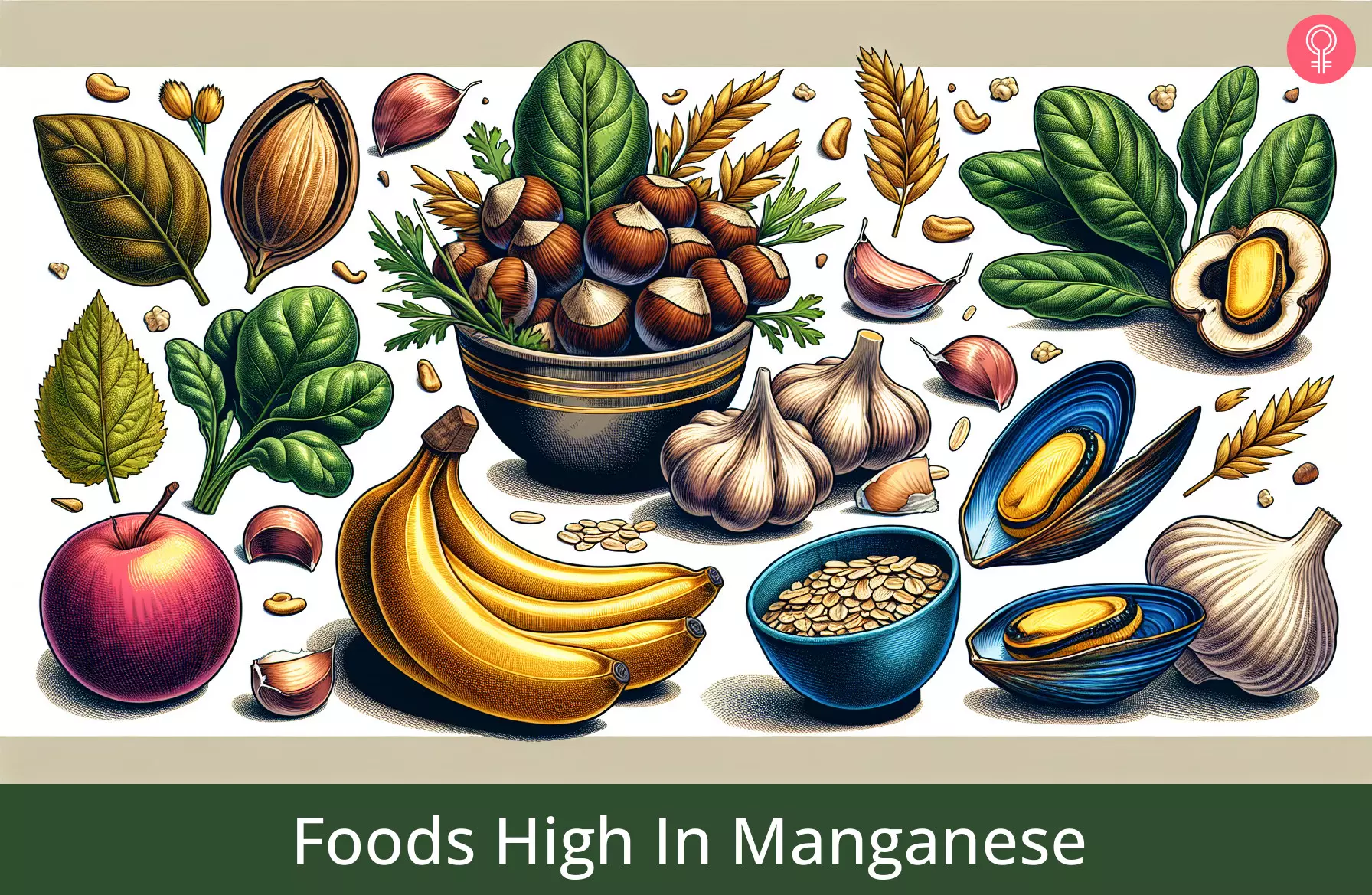
Image: Dall·E/StyleCraze Design Team
Discover the wonders of manganese, an essential mineral vital for your overall health. Watch this video to know more about the 15 delicious high-manganese foods you should include in your diet.
References
Articles on StyleCraze are backed by verified information from peer-reviewed and academic research papers, reputed organizations, research institutions, and medical associations to ensure accuracy and relevance. Read our editorial policy to learn more.
- “Manganese”. University of Maryland Medical Center.
- “Microelements for bone boost: the last but not the least”US National Library of Medicine.
- “The Essential Element Manganese, Oxidative Stress, and Metabolic Diseases: Links and Interactions”US National Library of Medicine.
- “Manganese” US National Library of Medicine.
- “Toxicological Profile for Manganese” US National Library of Medicine.
- “Manganese”. US National Library of Medicine.
- “Beta glucan: health benefits in obesity and metabolic syndrome”. University of Toronto, Canada.
- “Long-term intake of soy protein improves blood lipid...”. University of Illinois, USA.
- “Unawareness of the effects of soy intake…”. University of California San Diego, USA.
- “Effects of rye bran, oat bran…”. University of Umea, Sweden.
- “Quinoa: An Emerging “New” Crop with Potential for CELSS”. NASA Technical Paper.
- “Prostate cancer and supplementation with alpha-tocopherol…”. University of Helsinki, Finland.
- “Berry health benefits network”. Oregon State University.
- “Fruits, vegetables, and risk of renal cell…”. Karolinska Institutet, Sweden.
- “Egg, whole, raw, fresh”. FoodData Central
- “Beverages, tea, green, brewed, regular”. FoodData Central
- “Influence of tea drinking on manganese intake…”, National Library Of Medicine
- “Molecular evidences of health benefits of drinking black tea”, National Library Of Medicine
- “Potential role of flavonoids in treating chronic inflammatory diseases with a special focus on the anti-inflammatory activity of apigenin”, National Library Of Medicine
Read full bio of Laine Greenawalt
Read full bio of Ravi Teja Tadimalla
Read full bio of Arshiya Syeda
Read full bio of Aparna Mallampalli






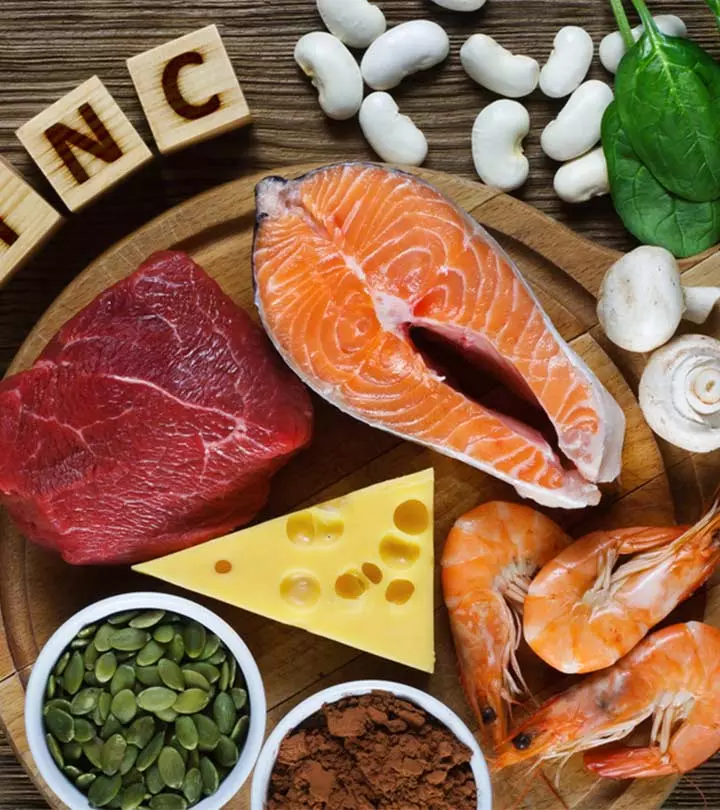
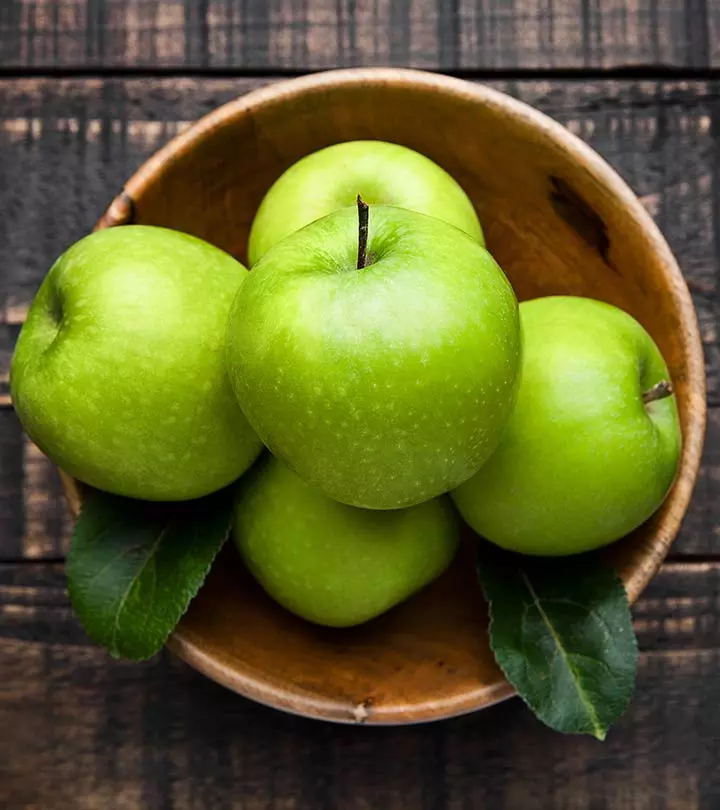
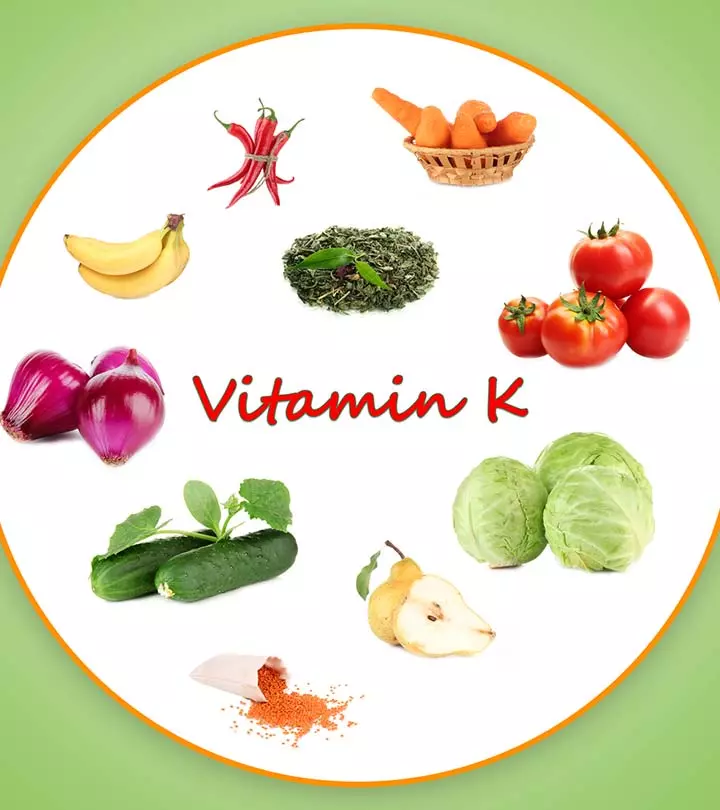
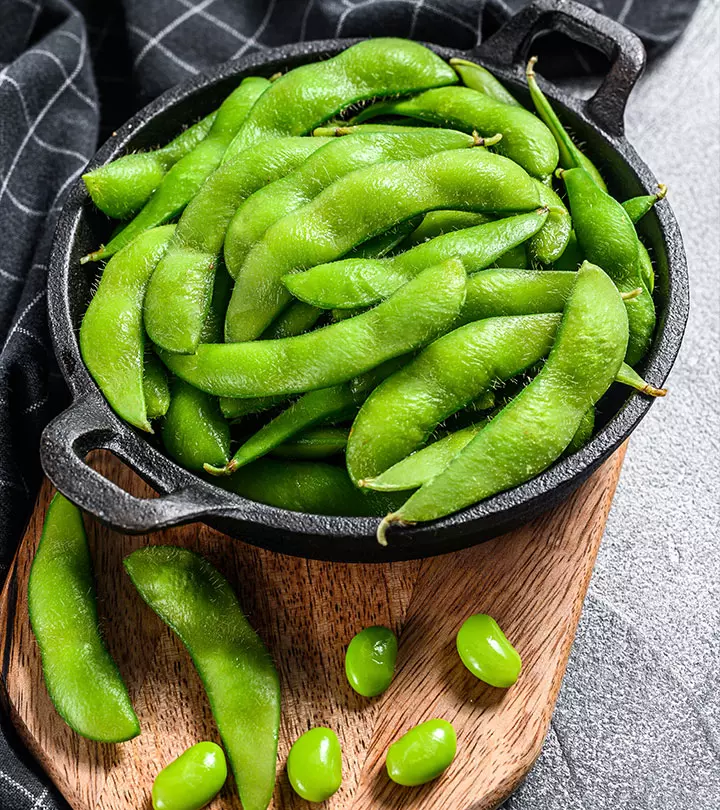

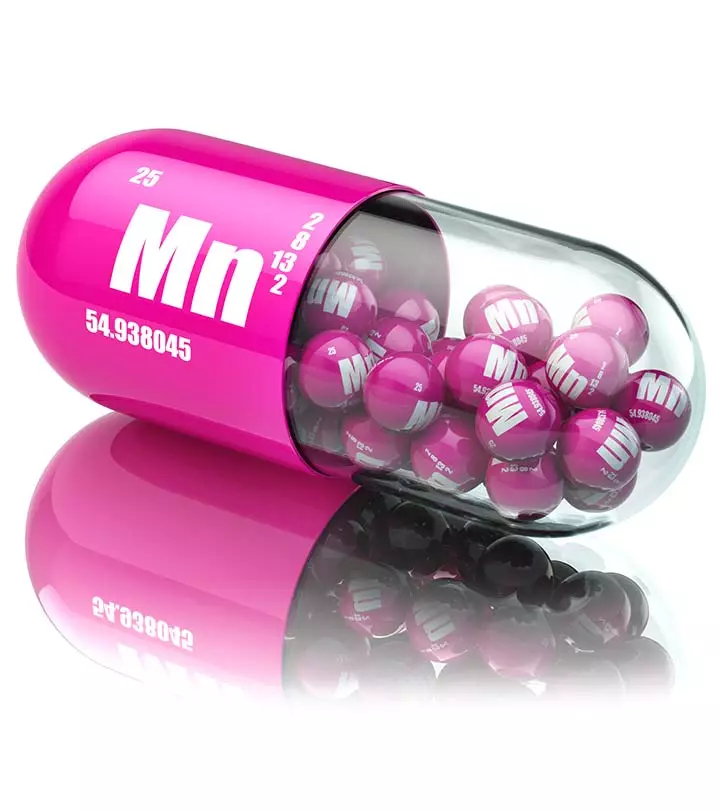

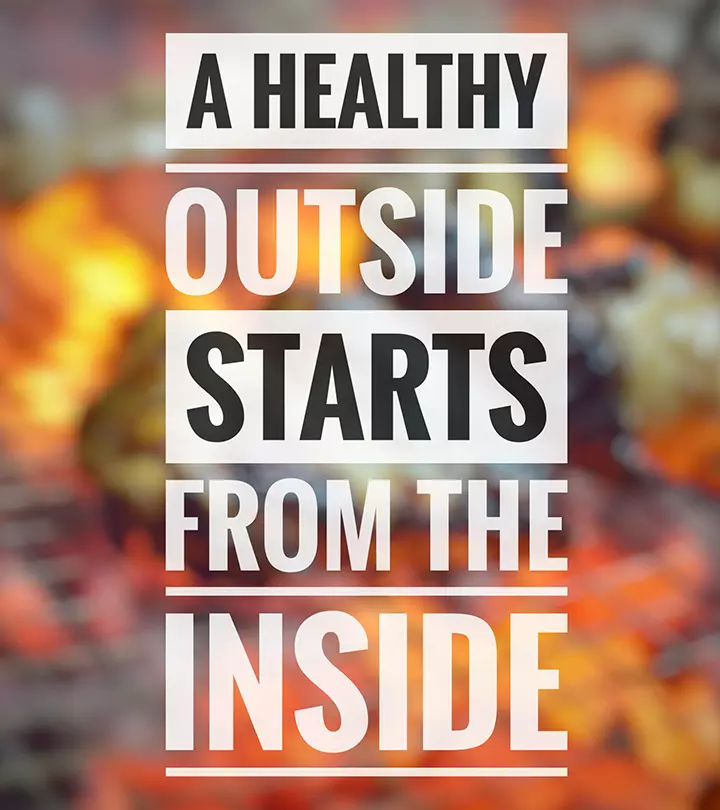







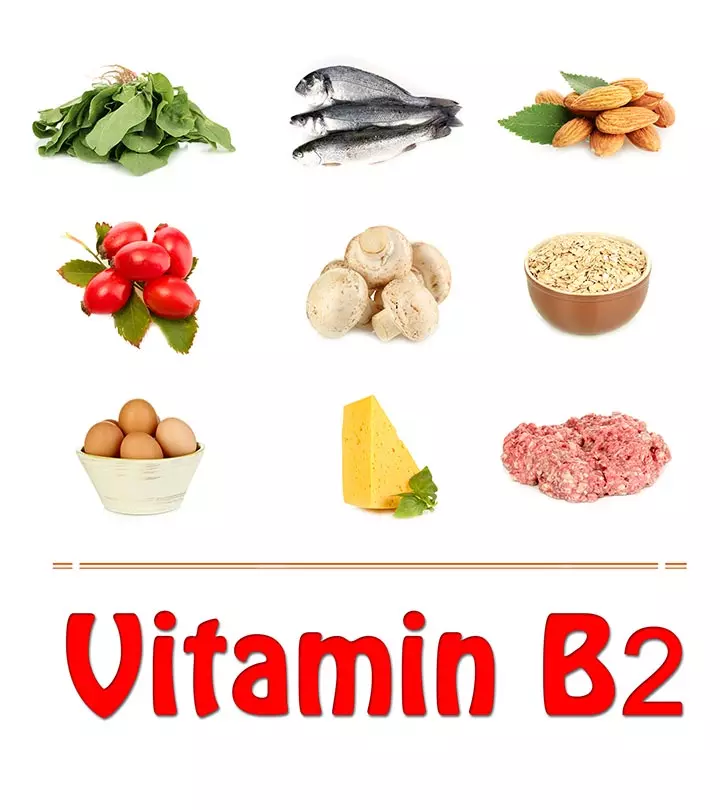
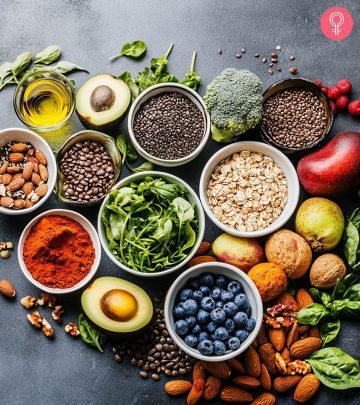


Community Experiences
Join the conversation and become a part of our empowering community! Share your stories, experiences, and insights to connect with other beauty, lifestyle, and health enthusiasts.